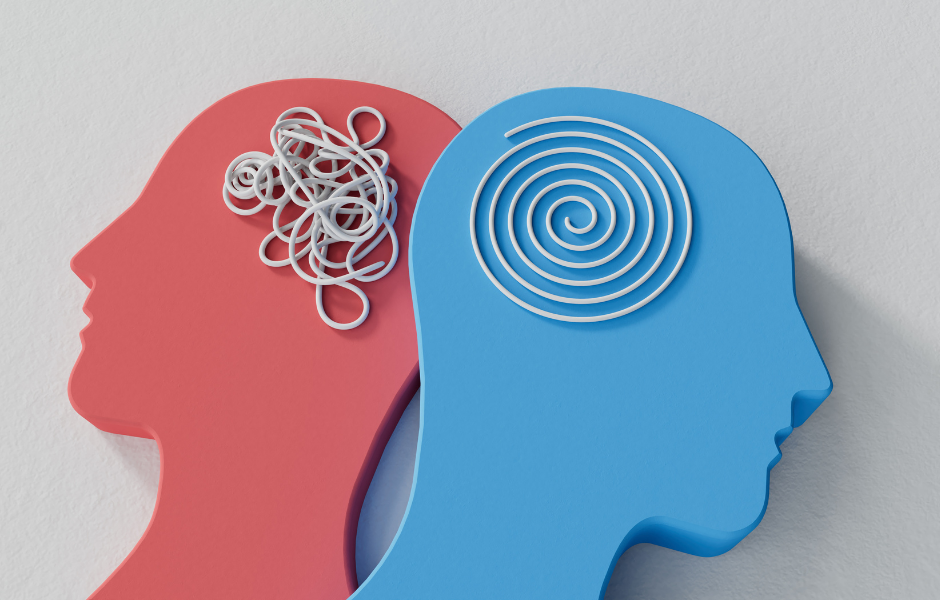Mood Disorders
Recognizing mood disorders in yours or your loved one’s lives is important as these disorders significantly affect various aspects of life, including relationships, work or academic performance, physical health, and overall quality of life. Additionally, they are associated with an increased risk of substance abuse and suicide. Mood disorders encompass a range of mental health conditions that affect a person's emotional state, sense of well-being, and healthy interactions with the world around the person. It is our pleasure to help you educate yourself in the world of mental health. We would like to caution that it is crucial to understand that while self-education is valuable, it cannot replace professional interventions and diagnosis. Many mental and physical health conditions can present with similar symptoms, which can lead to confusion and misinterpretation if one attempts to self-diagnose based on reading materials such as this. Having said that, here are the key points on mood disorders:
Mood disorders symptoms can present as depression, mania, and hypomania. Depressive symptoms may include persistent sadness, hopelessness, fatigue, changes in appetite or sleep, loss of interest in activities, difficulty concentrating, and thoughts of death or suicide. Manic symptoms may include highly elevated or irritable mood, increased energy, reduced need for sleep, grandiosity, rapid speech, impulsive behavior, and racing thoughts. Hypomania symptoms are like manic symptoms but less severe and not causing significant impairment in social or occupational functioning.
Patterns of these symptoms are identified as mood disorders and are diagnosed through clinical evaluation, which includes a detailed interview, patient history, and standardized questionnaires. Criteria from the DSM-5 (Diagnostic and Statistical Manual of Mental Disorders) are often used. There are five categories of mood disorders that can be recognized clusters of the symptoms mentioned above:
Major Depressive Disorder (MDD) is characterized by persistent and severe episodes of depression that impact daily functioning whereas Bipolar Disorder involves episodes of both depression and mania (elevated mood, energy, and activity levels), all three of which can vary in severity. There are three types of Bipolar disorders.
Bipolar I Disorder is defined by manic episodes lasting at least seven days or severe enough to require hospitalization, often accompanied by depressive episodes. Bipolar II Disorder is recognized by a pattern of depressive episodes and hypomanic episodes that are less severe than manic episodes and Cyclothymic Disorder is an even milder form of bipolar disorder with chronic fluctuating moods involving periods of hypomania and mild depression.
Persistent Depressive Disorder is a chronic form of depression with less severe symptoms that last for at least two years. Seasonal Affective Disorder (SAD) is a depression that occurs at certain times of the year, usually in beginning in fall and last into winter. And lastly, Disruptive Mood Dysregulation Disorder (DMDD) occurs in children and adolescents and involves severe temper outbursts and chronic, irritable mood.
The causes and risk factors for mood disorders are complex and multifaceted. Biological factors include imbalances in brain chemicals (neurotransmitters), genetic predisposition, and hormonal changes. Psychological aspects include negative thinking patterns, low self-esteem, trauma, and stress. Environmental considerations are chronic stress, lack of support, major life changes, and social isolation.
Treatment involves working through the above-mentioned causal factors to determine best practices for your unique situation. Once accomplished, a treatment plan is agreed upon and may include:
Psychotherapy: Cognitive-behavioral therapy (CBT), interpersonal therapy (IPT), dialectical behavior therapy (DBT), and other forms of counseling.
Medication: Antidepressants, mood stabilizers, antipsychotics, and other medications depending on the specific disorder and symptoms.
Lifestyle Changes: Regular exercise, a healthy diet, adequate sleep, stress management techniques, and avoiding alcohol and drugs.
Support Systems: Involvement in support groups, maintaining social connections, and family support.
Alternative Therapies: Mindfulness, meditation, and other complementary therapies.
We hope that you find this information helpful and that it motivates you toward prevention or management of your physical health, mental hygiene, and the environments within which you place yourself. Your self-care steps may include
Early Intervention: Recognizing and addressing symptoms early can prevent worsening.
Ongoing Management: Continued treatment and lifestyle adjustments can help manage symptoms and prevent relapse.
Education and Awareness: Ongoing effort to thoroughly understand the signs and symptoms of mood disorders can help individuals seek help and reduce stigma.
Aptiva providers undergo rigorous training that includes extensive classroom education, hands-on clinical experience, and ongoing professional development. This comprehensive training equips them with the skills necessary to accurately assess, diagnose, and treat a wide range of health conditions. They are trained to consider the full context of a patient's symptoms, medical history, and individual circumstances. Here at Aptiva, you are in safe hands.





